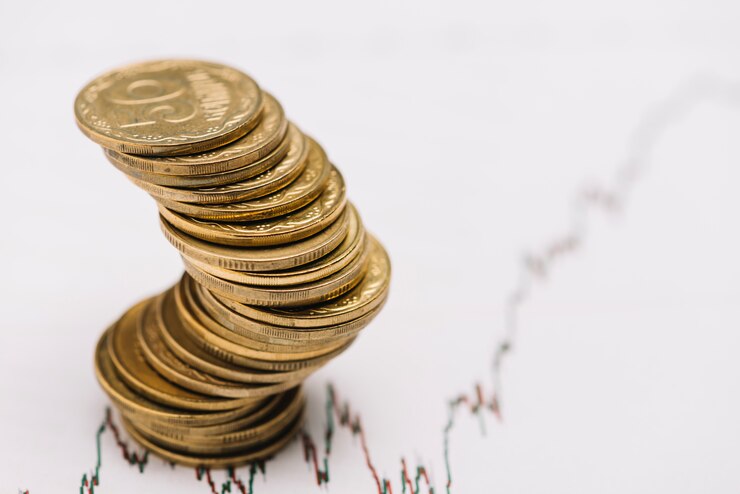Fixed deposits are a preferred investment avenue as the interest rates remain constant, and you enjoy assured returns. The majority of institutions, including banks and Non-Banking Financial Institutions (NBFCs), offer FDs.
To choose the right one and ensure you get the highest FD interest rates, compare the rates from various issuers. You also need to invest strategically to maximise your gains, which can be easily done with a few easy tips. Read on to know more.
Fixed Deposit Interest Rates Offered by Various Financial Institutions
To get the highest returns, it is essential to compare FD rates from different issuers. Refer to the following table to know the maximum rates from some of the leading financial institutions:
| Fixed Deposit Issuer | Rates for Regular Citizens (in per annum) | Rates for Senior Citizens (in per annum) |
| Bajaj Finance Limited | 8.10% | 8.35% |
| Axis Bank | 7.20% | 7.70% |
| Mahindra Finance Limited | 8.10% | 8.35% |
| AU Small Finance Bank | 8.00% | 8.50% |
| HDFC Bank | 7.40% | 7.90% |
| PNB Housing Finance Limited | 7.75% | 7.95% |
| ICICI Bank | 7.20% | 7.75% |
| YES BANK | 8.00% | 8.50% |
| Canara Bank | 7.25% | 7.75% |
| Ujjivan Small Finance Bank | 8.25% | 8.75% |
| Shriram Finance Limited | 8.91% | 9.45% |
| DBS Bank | 7.50% | 8.00% |
| IDFC First Bank | 7.75% | 8.25% |
Disclaimer: The above rates are subject to change at the issuer’s discretion.
Tips to Get Maximum Fixed Deposit Returns
If you are opening an FD for the first time, it is important to do it strategically to get the best returns. Here are some easy strategies you can employ:
Select the Right Issuer
One of the most important decisions you make while opening an FD is deciding on the issuer. This is because the interest rates, FD tenor, fees and charges and other factors vary across financial institutions. By doing an FD rates comparison and evaluating other terms, you can find the best issuer for your deposit.
Choose the Right FD Terms
You must choose the highest interest rates in an FD to maximise your returns. The higher the rates, the higher the returns you get and vice-versa. However, the interest you get depends on several factors, such as:
- Tenor
- Amount
- Your age
Issuers offer preferential rates to senior citizens, and if you invest a higher sum, you will get higher interest. Additionally, longer tenors generally have the highest FD interest rates. However, it is essential to assess your financial goals and balance the tenor with your liquidity needs.
Use a Laddering Strategy
Opt for a ladder investment strategy for enhanced liquidity. Here, you need to split the amount you wish to invest in one FD into multiple FDs with different maturity tenors. You can avoid locking your funds at low rates and leverage the changing rates to get the best returns.
So, this approach enhances liquidity and allows you to benefit from different interest rates over time.
Opt for a Cumulative FD
You can choose from two main types of fixed deposit plans: cumulative and non-cumulative. Consider opting for a non-cumulative fixed deposit if you require a steady income. Depending on your issuer, you can choose from the following payout frequencies:
- Monthly
- Quarterly
- Half-yearly
- Yearly
A cumulative fixed deposit might be more suitable if you aim to maximise returns. In this plan, interest is compounded quarterly or annually and is paid out at the end of the deposit term along with the principal.
Because of compounding, cumulative FDs generally provide higher returns than non-cumulative ones.
Avoid Withdrawing Before Maturity
If you have urgent financial needs, you can either make a premature withdrawal from your FD or take a loan against it. With a premature withdrawal, the issuer may l impose a penalty and even reduce the FD interest rate. This can significantly reduce the returns you stand to get.
Alternatively, you can choose to take a loan against your fixed deposit. This is because you will only need to pay interest on the amount you use and for the duration that you use it.
Utilise Applicable Tax Deductions
If the interest you earn on your fixed deposit exceeds a certain threshold, the issuer is liable to deduct TDS. The tax is deducted according to the income tax slab you fall under.
However, if your total income is below the exemption, you can avoid this deduction by submitting Form 15G or Form 15H to the issuer.
Consider Renewing Your FD
Another excellent way to enhance your returns is reinvesting the interest you earned on your FD. Instead of withdrawing the interest, you can choose to auto-renew your FD online or offline. With the power of compounding, this investment strategy helps you earn significant returns over the long term.
Although the interest rates are one of the most important factors while opening an FD, there are other factors you must consider. One of the crucial aspects you need to consider is the issuer’s credibility to ensure the safety of your funds.
Check the ratings that credit rating agencies such as CRISIL and ICRA give to the institution and choose an issuer with the highest ratings.







